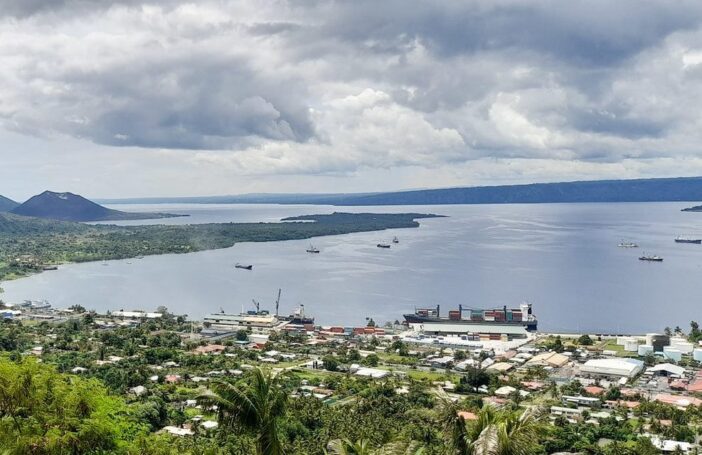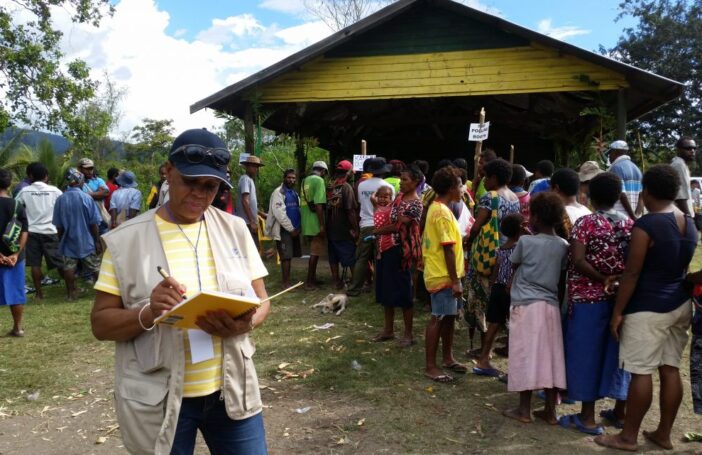Understanding sub-national governance in Papua New Guinea is never easy as the data is hard to come by. To address this, I created the Provincial Budget Database earlier this year to track subnational fiscal data back to 2007. I have now expanded the database. This post reveals some of what we can learn from the new data.
Local-level governments (LLGs) are PNG’s third tier of government, after the national government and provincial governments (there are also districts, corresponding to electorates, but these are not considered a tier of government). Getting a definitive list of LLGs has been difficult, but now we have one, and I have included it in the database. Of PNG’s 372 LLGs, only 31 are urban while the rest are rural. By law, each district is limited to three rural LLGs save in exceptional circumstances. However, the average number of LLGs across PNG’s 93 districts (Port Moresby’s three districts don’t contain LLGs) is actually 3.6. It is difficult to believe that there are “exceptional circumstances” for all the 42 districts that have more than three rural LLGs (Manus has the most at 11).

I’ve also included new population data in the database. This is per-district and is consistent with the current best estimate of PNG’s total population, which is 11.8 million. This data shows that the variation across district populations has actually worsened, despite the 2022 district-splitting exercise (seven districts were each split into two). In 2011, the largest district was 5.4 times larger than the smallest district. The largest district (now Nipa Kutubu in Southern Highlands) is now 14 times larger than the smallest district (now Obura Wonenara in Eastern Highlands).
By law, district populations are allowed to vary 20% either side of the district average. By this legal standard, 22 districts (up from 21 in 2011) are too big, while another 36 (up from 32 in 2011) are too small. This worsening malapportionment is a concern given districts are the country’s open electorates: it violates the basic democratic tenet that everyone should be equally represented in parliament.
Figure 1: PNG’s district populations in 2021
Source: PNG Province Budget Database
While the database’s main focus is on sub-national revenue and expenditure, it also looks at sub-national governance. That aspect has been strengthened with the inclusion of data on the status of submissions by provinces and districts of acquittals for the Service Improvement Program (SIP) funding they receive. SIP funds are discretionary capital grants provided to provincial and district members of parliament (MPs). K9.65 billion of SIP funds were disbursed between 2013 and 2022. These constituency development funds are managed directly by politicians, and often referred to as MP slush funds. In fact they are meant to be for development, and acquittals are compulsory. As the chart below shows, most provinces and districts do eventually acquit, but with a long delay. Two provinces (Hela and New Ireland) and one district (Kagua-Erave in Southern Highlands) have failed to acquit their SIP spending since 2013. On average, provinces are slower to acquit than districts.

The database now also has more detail on function grants from the national government, which are important for most provinces. These are designed to cover non-salary operational expenditure and service delivery costs for essential services including health and education. In an earlier post, I noted that the 2014 spike in function grants, part of a ramping-up of national government spending, turned out to be unsustainable as commodity prices fell in subsequent years. In those years, higher government spending allowed for additional capital grants to be disbursed that were not initially budgeted for and ceased after 2018. These additional capital grants amounted to K4.6 billion, averaging 56% of function grants in years when they were disbursed.
More recently, real (adjusted for inflation) function grant levels have been much lower and stagnant. By law, the minimum function grant total to be provided by national government to the provinces (excluding the National Capital District and Bougainville given they are governed by different acts) is 6.57% of non-resource tax revenue. The chart below shows function grants have been flat after inflation since 2019, and below the 6.57% threshold. The lack of real growth in function grants is a damning indictment of real non-resource sector tax performance, but also means that the law has not been complied with.
The database now includes detail on the specific purposes for which function grants are provided, including education, health, transport, village courts, and LLGs. Health function grants are now given directly to Provincial Health Authorities, leaving education and transport as the biggest grants. Whether provinces actually spend their function grants for their intended purposes remains a subject for further research.

Sub-national governments are extremely important in modern-day PNG and rarely get the attention they deserve. The PNG Provincial Budget Database helps fill the gaps in our data and understanding about the challenges they face, and the resources they have available.
View the PNG Provincial Budget Database on the ANU Devpolicy website.






very interesting